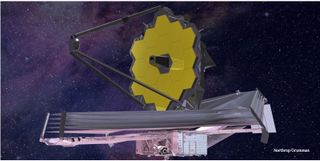Who Will Get First Dibs on the Powerful James Webb Space Telescope?

The James Webb Space Telescope, which will be able to peer even farther back in time than the Hubble Space Telescope, is 20 months away from launch, but the countdown clock is ticking for scientists who want first dibs on using the new eye in space.
NASA in January kicked off what is expected to be a heated competition for telescope time. The infrared observatory, which will cost NASA close to $9 billion through 2024, is on schedule for launch in October 2018.
Once in position about 1 million miles from Earth, engineers will begin preparing the telescope and its four science instruments for its five-year mission.
Planetary scientists and cosmologists alike have a long to-do list for JWST.
Choice projects will vie for the first round of what's known as the Guaranteed-Time Observer, or GTO, program. NASA on Jan. 6 issued a call for proposals for the GTO, along with a second telescope booking opportunity known as the Director's Discretionary Early Release Science program.
RELATED: For NASA's Hubble Successor, Failure Isn't an Option
"With this, JWST community science formally begins," NASA wrote in the solicitation.
Get the Space.com Newsletter
Breaking space news, the latest updates on rocket launches, skywatching events and more!
Once the telescope is operational, it is expected to be available for science operations 8,776 hours per year. Up to 10 percent of the time will be used at the director's discretion. The rest is for guaranteed and general observer programs.
With a 6.5-meter (21.3-foot) primary mirror, JWST is expected to operate at about 100 times the sensitivity of the Hubble Space Telescope, according to NASA. To keep its instruments cool enough so they can detect the faintest infrared light, the telescope includes a multi-layered sunshield that is as big as a tennis court.
Observations are expected to begin in April 2019.
RELATED: What Can Giant Telescopes Reveal About Our Universe?
Originally published on Seeker.
Join our Space Forums to keep talking space on the latest missions, night sky and more! And if you have a news tip, correction or comment, let us know at: community@space.com.

Irene Klotz is a founding member and long-time contributor to Space.com. She concurrently spent 25 years as a wire service reporter and freelance writer, specializing in space exploration, planetary science, astronomy and the search for life beyond Earth. A graduate of Northwestern University, Irene currently serves as Space Editor for Aviation Week & Space Technology.
